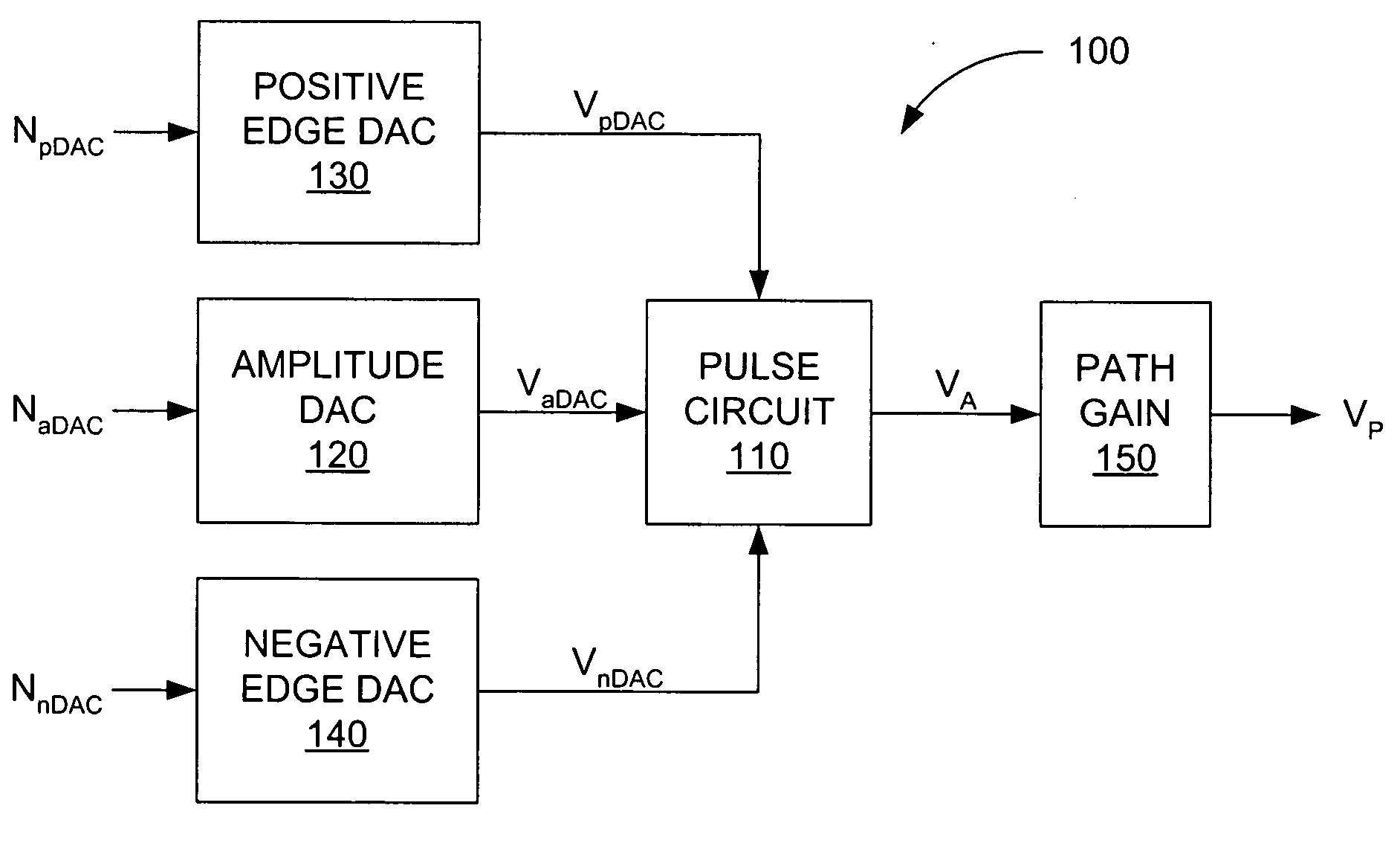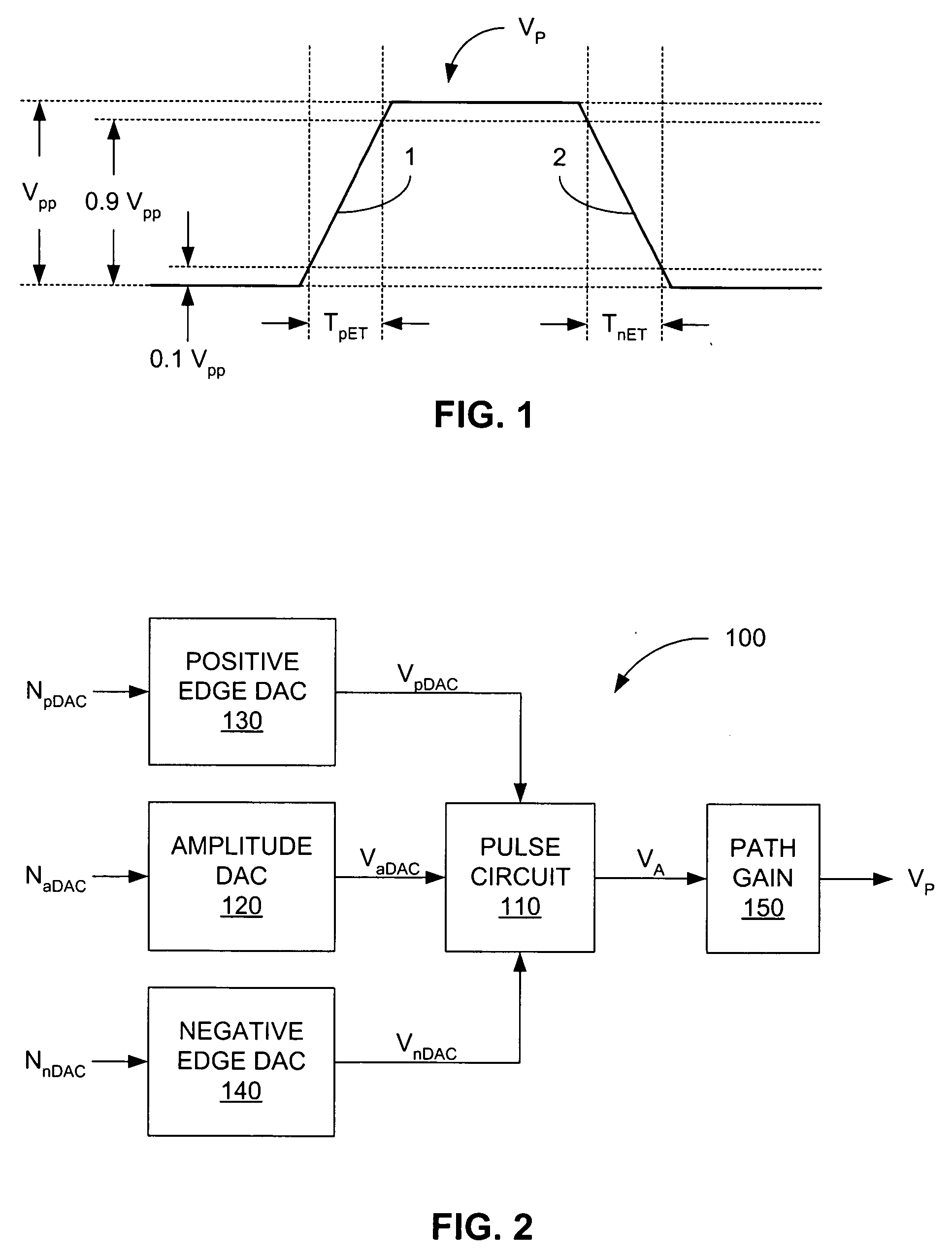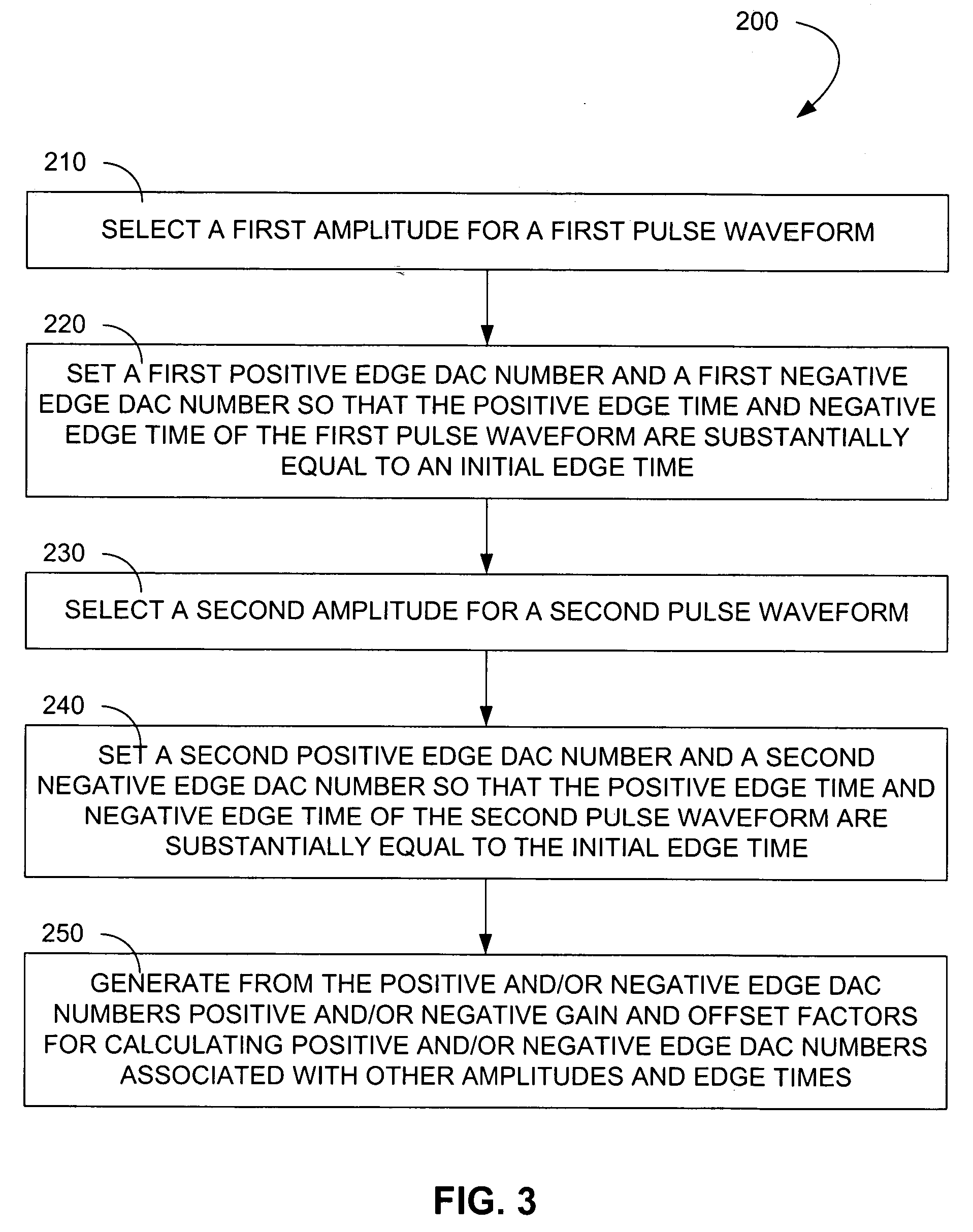Method and system for pulse waveform variable edge control
a pulse waveform and variable edge technology, applied in pulse manipulation, pulse technique, instruments, etc., can solve the problem that the calibration procedure cannot operate effectively on such a pulse generator, and achieve the effect of simplifying calculation
- Summary
- Abstract
- Description
- Claims
- Application Information
AI Technical Summary
Benefits of technology
Problems solved by technology
Method used
Image
Examples
Embodiment Construction
[0012] Before describing the method embodiments of the invention herein disclosed, a block diagram of a portion of a pulse generator 100 upon which the method embodiments may operate is shown in FIG. 1. A pulse circuit 110 is primarily responsible for generating an intermediate pulse waveform VA based on several inputs received. For example, the amplitude of the intermediate pulse waveform VA is determined by an amplitude DAC voltage VaDAC, which is generated by an amplitude DAC 120 and is based on an amplitude DAC number NaDAC. The higher the amplitude DAC number NaDAC, the higher the amplitude of the intermediate pulse waveform VA.
[0013] The pulse circuit 110 also accepts two inputs that allow modification of the slew rate of both the rising and falling edges of the intermediate pulse waveform VA. The slew rate is the rate at which the voltage changes per unit time. The slew rate of the rising edge of that pulse is controlled by a positive edge DAC voltage VpDAC, which is generat...
PUM
 Login to View More
Login to View More Abstract
Description
Claims
Application Information
 Login to View More
Login to View More - R&D
- Intellectual Property
- Life Sciences
- Materials
- Tech Scout
- Unparalleled Data Quality
- Higher Quality Content
- 60% Fewer Hallucinations
Browse by: Latest US Patents, China's latest patents, Technical Efficacy Thesaurus, Application Domain, Technology Topic, Popular Technical Reports.
© 2025 PatSnap. All rights reserved.Legal|Privacy policy|Modern Slavery Act Transparency Statement|Sitemap|About US| Contact US: help@patsnap.com



